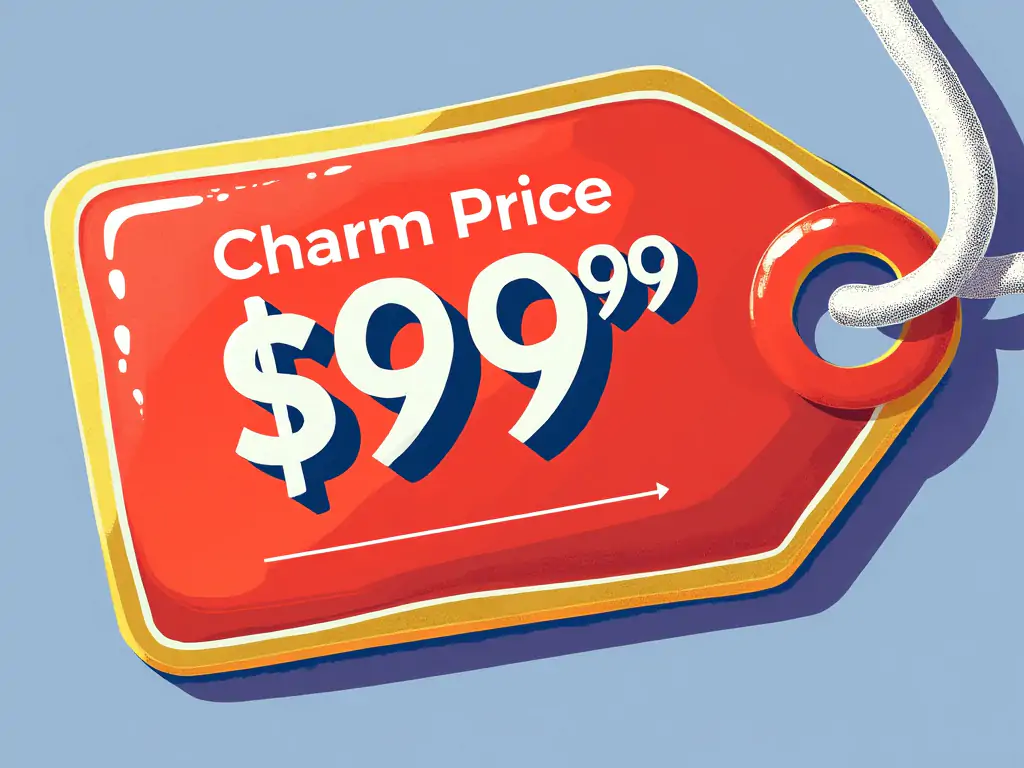Unlock the secrets of pricing psychology to propel your startup to new heights.
Introduction
Setting the right price for your startup’s products or services is a delicate balancing act that goes beyond covering costs and adding a markup. It’s an intricate dance involving customer perceptions, psychological triggers, market dynamics, and competitive positioning. For entrepreneurs and small business owners, mastering the art of pricing is essential for attracting customers, driving sales, and achieving sustainable growth.
In this extensive guide, we’ll delve deep into the psychology behind pricing strategies. We’ll explore how consumers think, the subconscious triggers that influence purchasing decisions, and how you can leverage this knowledge to set prices that are not only irresistible but also profitable. We’ll cover practical techniques, real-world examples, and actionable insights to help you navigate the complex landscape of pricing in today’s competitive market.
Table of Contents
- The Importance of Pricing in Startups
- Understanding Customer Psychology
- Psychological Pricing Strategies
- Perceived Value vs. Actual Value
- Competitive Analysis and Market Positioning
- Dynamic Pricing in the Digital Age
- Cultural and Global Considerations
- Case Studies: Startups that Nailed Pricing
- Common Pricing Mistakes to Avoid
- Implementing and Testing Your Pricing Strategy
- FAQs on Startup Pricing
- Key Takeaways
- Conclusion
1. The Importance of Pricing in Startups
Price is more than just a number on a tag or a figure on a screen; it’s a powerful communication tool that conveys value, quality, and brand positioning. For startups, where resources are limited and market presence is still being established, getting the pricing right is crucial.
- First Impressions Matter: Price is often the first point of contact between your product and potential customers. It sets expectations about quality and value.
- Revenue Generation: Pricing directly impacts your revenue and profitability. The right price can maximize profits without deterring customers.
- Market Positioning: Strategic pricing helps position your brand in the market—whether as a cost-effective alternative, a premium option, or a disruptive force.
- Customer Acquisition and Retention: Competitive and fair pricing can attract new customers and foster loyalty among existing ones.
The High Stakes of Pricing Decisions
A mispriced product can lead to:
- Lost Sales: If the price is too high, customers may turn to competitors.
- Eroded Profits: If the price is too low, you may sell more but at the expense of profitability.
- Brand Damage: Inconsistent pricing strategies can confuse customers and dilute brand equity.
Understanding the gravity of pricing decisions underscores the need for a well-thought-out strategy rooted in psychology and market analysis.
2. Understanding Customer Psychology
Emotional vs. Rational Decisions

While traditional economic theories assume that consumers act rationally, real-world behavior often tells a different story. Emotions frequently trump logic in purchasing decisions.
- Impulse Buying: Emotional triggers like excitement, fear of missing out (FOMO), or perceived scarcity can prompt immediate purchases.
- Brand Affinity: Emotional connections to a brand can justify higher prices in the eyes of consumers.
- Social Proof: Seeing others purchase a product can create a bandwagon effect, influencing individual decisions.
Cognitive Biases in Pricing
Cognitive biases are systematic patterns of deviation from norm or rationality in judgment. Recognizing these can help tailor pricing strategies.
- Anchoring Bias: The tendency to rely heavily on the first piece of information encountered (the “anchor”) when making decisions.
- Loss Aversion: The fear of losing something is more powerful than the pleasure of gaining something of equal value.
- Endowment Effect: People ascribe more value to things merely because they own them.
- Decoy Effect: The presence of a third, less attractive option can influence consumers to choose the more expensive of two original options.
By tapping into these psychological factors, startups can design pricing models that resonate more deeply with their target audience.
3. Psychological Pricing Strategies
Charm Pricing

Charm pricing involves setting prices that end with the digit ‘9’ or ’99’, such as $9.99 instead of $10.00. This exploits the way our brains process numerical information.
- Left-Digit Effect: Consumers tend to focus on the left-most digits of a price, perceiving $9.99 as significantly cheaper than $10.00.
- Perceived Value: The slight reduction creates a psychological impression of getting a better deal.
- Studies and Statistics: Research shows that charm pricing can increase sales by up to 24%.
Implementation Tips
- Use charm pricing for products where consumers are price-sensitive.
- Combine with other strategies like highlighting savings (e.g., “Was $15, now $9.99”).
Price Anchoring
Price anchoring involves presenting a higher-priced option first to make subsequent options appear more affordable.
- High Anchors Set Expectations: Introducing a premium product or service sets a reference point for value.
- Contrast Effect: Lower-priced options seem more attractive when compared to the anchor.
- Enhancing Perceived Value: Even if customers don’t choose the highest-priced item, the mere presence can boost the perceived value of other offerings.
Implementation Tips
- Offer a premium version of your product, even if it’s not your main seller.
- Use strikethrough pricing to show discounts from the original (anchored) price.
The Decoy Effect
The decoy effect involves introducing a third option that is asymmetrically dominated, making one of the other two options more attractive.
- Guiding Choices: The decoy is priced to make a target option seem like the best value.
- Boosting Higher Sales: Often used to nudge customers toward more expensive options.
Implementation Tips
- Design the decoy to be less attractive in terms of price-to-value ratio.
- Ensure the decoy is similar but inferior to the target product.
Bundling and Unbundling
Bundling combines multiple products or services into a single package, often at a discounted rate.
- Perceived Savings: Customers feel they are getting more value for less money.
- Increased Sales Volume: Moves more products by tying them together.
- Simplified Decision-Making: Reduces the number of choices, making it easier for customers to decide.
Implementation Tips
- Bundle complementary products to enhance overall value.
- Offer both bundled and individual options to cater to different customer preferences.
Scarcity and Urgency
Creating a sense of scarcity or urgency can prompt immediate action.
- Limited-Time Offers: Encourages quick decision-making to avoid missing out.
- Limited Stock Notifications: Indicates high demand and low supply, increasing desirability.
- Countdown Timers: Visually represent the time limit, enhancing the urgency.
Implementation Tips
- Use scarcity tactics ethically to maintain trust.
- Clearly communicate the terms of the offer to avoid customer dissatisfaction.
Prestige Pricing

Prestige pricing sets prices high to indicate quality and exclusivity.
- Luxury Market Positioning: Appeals to consumers who associate higher prices with superior quality.
- Brand Image Enhancement: Positions the brand as premium or luxury.
- Attracting Niche Markets: Targets customers willing to pay more for exclusivity.
Implementation Tips
- Ensure the product quality matches the high price to meet customer expectations.
- Invest in branding and marketing to reinforce the prestige image.
4. Perceived Value vs. Actual Value
The Role of Branding
A strong brand can significantly elevate the perceived value of a product.
- Emotional Connections: Brands that resonate emotionally can command higher prices.
- Trust and Reliability: Established brands are perceived as more trustworthy.
- Brand Equity: The cumulative value of a brand influences customer willingness to pay.
Implementation Tips
- Invest in brand-building activities like storytelling and customer engagement.
- Maintain consistent branding across all touchpoints.
Quality Signals
Visual and experiential cues can enhance perceived quality.
- Premium Packaging: High-quality materials and design suggest a superior product.
- Professional Website and Marketing Materials: Enhance credibility and trust.
- Customer Testimonials and Reviews: Social proof can validate quality claims.
Implementation Tips
- Use high-resolution images and professional designs in marketing.
- Encourage satisfied customers to leave positive reviews.
Customer Experience

Exceptional customer service can justify higher prices.
- Personalized Interactions: Tailoring experiences to individual customers adds value.
- After-Sales Support: Providing robust support enhances satisfaction.
- Loyalty Programs: Rewarding repeat customers increases perceived value.
Implementation Tips
- Train staff to provide excellent customer service.
- Implement CRM systems to personalize customer interactions.
5. Competitive Analysis and Market Positioning
Understanding the Market Landscape
Before setting prices, it’s crucial to understand the competitive environment.
- Competitor Pricing: Know what others in your market are charging.
- Market Demand: Assess the demand for your product or service.
- Customer Segments: Identify different segments and their price sensitivities.
Implementation Tips
- Use market research tools to gather data on competitors.
- Segment your market based on demographics, behavior, and needs.
Unique Value Proposition (UVP)
Your UVP differentiates you from competitors and can justify your pricing strategy.
- Highlighting Differentiators: Emphasize what makes your product unique.
- Communicating Benefits: Focus on how your product solves customer problems.
- Aligning with Customer Values: Ensure your UVP resonates with your target audience.
Implementation Tips
- Clearly articulate your UVP in all marketing materials.
- Gather customer feedback to refine your UVP.
Pricing Models: Skimming vs. Penetration
Choosing the right pricing model aligns your strategy with your business goals.
Price Skimming
- Definition: Setting high initial prices and lowering them over time.
- Advantages: Maximizes profits from early adopters willing to pay more.
- Considerations: Works best with innovative or unique products.
Penetration Pricing
- Definition: Setting low initial prices to gain market share quickly.
- Advantages: Attracts price-sensitive customers and discourages competitors.
- Considerations: Requires the capacity to meet increased demand.
Implementation Tips
- Assess your product lifecycle stage to choose the appropriate model.
- Monitor market reactions and be prepared to adjust your strategy.
6. Dynamic Pricing in the Digital Age
Real-Time Pricing Adjustments
Dynamic pricing involves adjusting prices based on real-time supply and demand conditions.
- Maximizing Revenue: Prices increase when demand is high and decrease when demand is low.
- Inventory Management: Helps in managing stock levels efficiently.
- Market Responsiveness: Allows quick reactions to market changes.
Implementation Tips
- Use algorithms and software that analyze market data in real-time.
- Set boundaries to ensure prices remain within acceptable limits.
Personalized Pricing Strategies
Personalized pricing tailors prices to individual customers based on their behavior and characteristics.
- Customer Segmentation: Different prices for different customer groups.
- Loyalty Discounts: Special pricing for repeat customers.
- Behavioral Pricing: Adjusting prices based on browsing history or engagement levels.
Implementation Tips
- Ensure transparency to avoid perceptions of unfairness.
- Comply with legal regulations regarding pricing discrimination.
Technological Tools and Software

Modern tools can facilitate sophisticated pricing strategies.
- Pricing Algorithms: Automate price adjustments based on predefined criteria.
- Data Analytics: Analyze customer data to inform pricing decisions.
- A/B Testing Platforms: Test different pricing models to see what works best.
Implementation Tips
- Invest in reliable software solutions with good support.
- Train your team to interpret data correctly.
7. Cultural and Global Considerations
Cultural Perceptions of Price
Different cultures perceive prices differently.
- Numerical Superstitions: Certain numbers are considered lucky or unlucky.
- Price Sensitivity: Varies widely across cultures.
- Haggling Norms: In some cultures, negotiating prices is expected.
Implementation Tips
- Research cultural norms in your target markets.
- Adjust pricing strategies to align with local expectations.
Currency and Exchange Rates
For startups operating globally, currency fluctuations can impact pricing.
- Exchange Rate Risk: Can erode profit margins if not managed.
- Price Localization: Setting prices in local currencies improves customer experience.
Implementation Tips
- Use financial instruments like hedging to manage exchange rate risks.
- Regularly update prices to reflect currency changes.
Localization Strategies
Adapting your pricing and products to local markets can enhance competitiveness.
- Localized Marketing: Tailor messages to resonate with local audiences.
- Regulatory Compliance: Ensure pricing practices comply with local laws.
- Cultural Adaptation: Modify products or services to meet local needs.
Implementation Tips
- Partner with local experts or consultants.
- Monitor local market trends and adjust accordingly.
8. Case Studies: Startups that Nailed Pricing
Case Study 1: Freemium Model Success
Company: Dropbox
- Strategy: Offered basic cloud storage services for free while charging for premium features.
- Execution: Leveraged the freemium model to build a massive user base.
- Results: Achieved widespread adoption, with a significant percentage converting to paid plans.
Lessons Learned:
- Value First: Providing immediate value encourages users to upgrade.
- Scalable Pricing: Offers room to grow with the customer.
Case Study 2: Luxury Positioning Triumph
Company: Tesla
- Strategy: Positioned itself as a premium electric car manufacturer with high pricing.
- Execution: Focused on innovation, quality, and brand prestige.
- Results: Captured a significant share of the luxury car market, commanding high profit margins.
Lessons Learned:
- Innovation Pays: Unique products can justify premium prices.
- Brand Image Matters: Strong branding supports higher pricing.
Case Study 3: Disruptive Pricing Innovation
Company: Dollar Shave Club
- Strategy: Offered razor subscriptions at a fraction of the traditional cost.
- Execution: Used humorous marketing and a simple pricing model.
- Results: Quickly gained market share and was acquired by Unilever for $1 billion.
Lessons Learned:
- Simplify Pricing: Easy-to-understand models attract customers.
- Disruptive Approaches: Challenging industry norms can lead to rapid growth.
9. Common Pricing Mistakes to Avoid
Underpricing and Overpricing
- Underpricing Pitfalls:
- Devalues Your Product: Customers may perceive low prices as low quality.
- Erodes Profits: Makes it harder to achieve sustainable margins.
- Overpricing Pitfalls:
- Reduces Sales Volume: High prices can deter potential customers.
- Increases Competition: May invite competitors to offer lower-priced alternatives.
Implementation Tips
- Conduct thorough market research to find the sweet spot.
- Regularly review and adjust prices based on performance.
Ignoring Customer Feedback
- Consequences: Can lead to misaligned pricing that doesn’t meet market needs.
- Missed Opportunities: Feedback can reveal willingness to pay more or less.
Implementation Tips
- Implement feedback mechanisms like surveys and reviews.
- Act on feedback to refine your pricing strategy.
Overcomplicating Pricing Structures

- Confusion Leads to Abandonment: Complex pricing can overwhelm customers.
- Hidden Fees Erode Trust: Additional charges can lead to dissatisfaction.
Implementation Tips
- Keep pricing straightforward and transparent.
- Clearly communicate what is included in the price.
10. Implementing and Testing Your Pricing Strategy
A/B Testing and Experiments
- Purpose: To determine which pricing strategy performs better.
- Methodology: Offer different prices to different segments and compare results.
- Metrics to Monitor: Conversion rates, average order value, customer acquisition cost.
Implementation Tips
- Ensure tests are run simultaneously to avoid temporal biases.
- Keep other variables constant to isolate the impact of pricing.
Customer Surveys and Feedback Loops
- Gather Insights: Understand customer perceptions and willingness to pay.
- Adjust Accordingly: Use feedback to fine-tune pricing.
Implementation Tips
- Offer incentives for completing surveys.
- Use open-ended questions for deeper insights.
Analyzing Data and Metrics
- Key Metrics:
- Gross Margin: Revenue minus the cost of goods sold.
- Price Elasticity: How sensitive sales are to price changes.
- Lifetime Value (LTV): Total revenue expected from a customer over their relationship with your company.
Implementation Tips
- Use analytics tools to track and visualize data.
- Regularly review metrics to inform strategic decisions.
11. FAQs on Startup Pricing
Q1: How often should I reevaluate my pricing strategy?
A: It’s advisable to review your pricing at least quarterly or whenever significant market shifts occur. Regular reviews help you stay competitive and responsive to market changes.
Q2: Is it acceptable to offer discounts frequently?
A: While discounts can boost short-term sales, overusing them may devalue your brand. Use discounts strategically and ensure they align with your overall pricing strategy.
Q3: How do I price a completely new product with no market comparison?
A: Focus on the value you provide and consider cost-plus pricing. Conduct customer surveys to gauge willingness to pay and adjust based on feedback.
Q4: Should I match competitors’ prices?
A: Not necessarily. While it’s important to be aware of competitors’ pricing, focus on your unique value proposition and how it justifies your pricing.
Q5: Can I use multiple pricing strategies simultaneously?
A: Yes, combining strategies like charm pricing with bundling can be effective. Ensure the combined approach remains coherent and doesn’t confuse customers.
12. Key Takeaways

- Understand Your Customer: Deep insights into customer psychology can inform more effective pricing strategies.
- Leverage Psychological Pricing: Techniques like charm pricing, anchoring, and the decoy effect can influence purchasing decisions.
- Balance Perception and Reality: Enhance perceived value through branding, quality signals, and customer experience.
- Stay Agile and Informed: Regularly analyze market trends, customer feedback, and performance metrics to adjust pricing strategies.
- Test and Iterate: Use A/B testing, surveys, and data analysis to refine your approach continually.
- Ethical Considerations: Ensure transparency and fairness in pricing to build long-term customer trust.
- Global Perspective: Adapt pricing strategies to align with cultural nuances and international market conditions.
13. Conclusion
Mastering the art of pricing is a continuous journey that intertwines psychology, economics, market research, and strategic planning. For startups, where every decision can significantly impact growth and sustainability, understanding the nuances of pricing is not just beneficial—it’s essential.
By embracing psychological principles, leveraging data-driven insights, and remaining adaptable to market changes, entrepreneurs can set prices that not only attract and retain customers but also drive profitability and brand equity.
Remember, there’s no one-size-fits-all solution. The most effective pricing strategies are those that are tailored to your unique business model, customer base, and market conditions. So take the time to experiment, learn from successes and failures, and don’t be afraid to adjust your approach as you gain new insights.
Your pricing strategy is a powerful tool in your startup’s arsenal. Use it wisely, and it can become a catalyst for unparalleled success.

Ready to revolutionize your pricing strategy? Implement these insights today and watch your startup soar to new heights.


